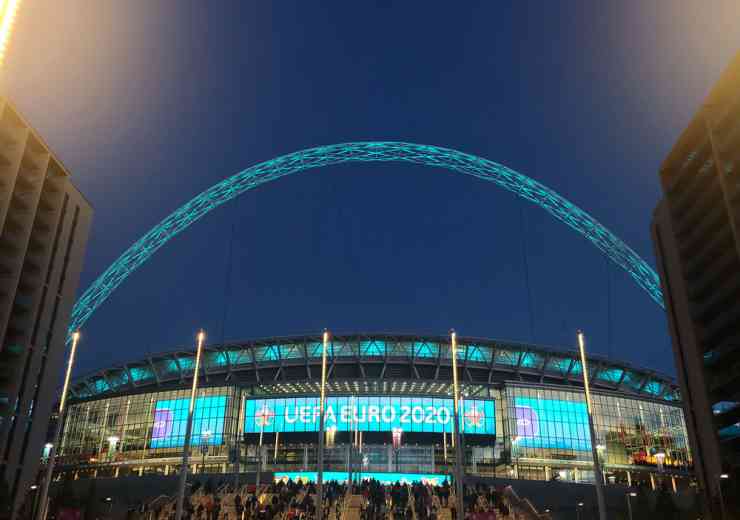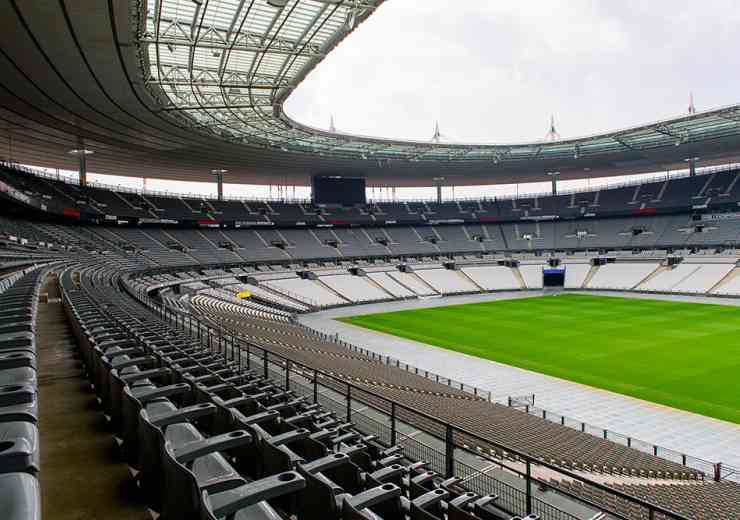
Managing the security of crowded places
At the start of June, the National Counter Terrorism Security Office (NaCTSO) published new and updated guidance for those responsible for managing the security of crowded places. We examine the paper and detail how event managers can better plan its events with site security in mind
One does not have to cast his mind back far to find incidents of event venues falling victim to a terrorist attack or even how established security systems prevented an attack from taking place. The November 2015 terrorist attacks in Paris shook the whole of Europe and raised the importance of event security to British and European law and security leaders. With coordinated attacks taking place across the French capital - starting at the Stade de France and ending at the Bataclan theatre - 130 people lost their lives, with over 400 more seriously injured.
The two bookends to that night of terrorist activity highlight the importance of security and counter terrorist protection at major events. While the tragedy that shook Paris, and with it the rest of Europe, was an act of terrorism that should not be given a disservice in discussion, there is no denying that the outcome had the potential to be much worse. The Bataclan attack will forever be known as a massacre, whereby the terrorists were able to carry out mass shootings into a large crowd who had little time or space to disperse, thus initiating maximum casualty possibilities, while the terrorist attacks at the Stade de France are better known as the attacks that started the succession of planned assaults.
The first attacks, which took place 20 minutes into a football match between France and Germany, resulted in just four deaths, three of which were the suicide bombers, later revealed to be acting on behalf of the so-called Islamic State group. Following that November night, French investigators revealed that the first suicide bomber had planned to detonate his vest within the Stade de France, the French national stadium, hoping to trigger a panicked exit onto the streets where the two remaining suicide bombers would detonate their own bombs, ensuring mass casualties.
The Stade de France has a capacity of just over 81,000. We now know that the first suicide bomber was prevented from entering the stadium after a security guard discovered the suicide vest while patting him down. He detonated his vest after being turned away, initiating the second and third terrorists to detonate theirs soon after, away from the stadium and away from the feeling flock of fans. One can only imagine how high the death toll could have been had the first terrorist not been refused entry to the stadium.
More recently, and admittedly more closer to home, the attack on an Ariana Grande concert at Manchester Arena on 22 May saw a lone wolf attacker detonate an improvised explosive device in the foyer area of the venue as parents waited for their children to vacate the venue. 14,200 people attended the concert, with 23 adults and children killed as part of the attack. A further 250 were injured in what has been described as the deadliest attack in the UK since the 7 July 2005 London bombings.
Crowded Places Guidance
The new Crowded Places guidance for the UK is primarily aimed at those with a responsibility for security at crowded places, including local authorities. It covers the key areas of protective security including physical, personnel, personal and cyber, designed to assist crowded place sectors assess the risk and build a security plan to help mitigate that risk and recover more quickly should there be a terrorist attack. While it is accepted that the concept of absolute security is almost impossible to achieve in combatting the threat of terrorism, it is possible to reduce the risk to as low as reasonably practicable. This new guidance aims to do that.
Launching the guidance, Deputy Assistant Commissioner Lucy D’Orsi said: “Terrorist attacks are rare in the UK, but recent events have shown that an attack could happen anywhere and without warning. Those locations either public or private where large groups of people gather, for reasons such as entertainment, business, transportation, sporting or social occasions, have always been preferential targets for terrorists.
“This new and updated guidance is intended to give protective security advice to those responsible for managing the security of crowded places. Every location is different and I would urge those of you who hold this responsibility to review your security using the information in this guidance to reassure yourselves around your Security Plan. Guidance within this booklet is intended to not only make the UK more resilient to a terrorist attack but also to support our fight against other crimes.”
Physical security and communication
The guide offers a range of advice to a number of different event venues and public spaces, including restaurants and hotels, cinemas and theatres, visitor attractions, commercial centres, transport hubs and stadia and arenas. A number of these places, particularly stadia and arenas, are at risk of a terrorist attack ‘by the very nature that they are crowded places’. Events from around world in recent years have highlighted how ‘terrorists are prepared to use different methodologies to attack sites and online terrorist media seeks to incite, inspire and enable individuals and groups to target these venues’.
One key message within this events security guidance is the notion of not creating a ‘fortress mentality’. While it is true that you can’t have a safe show without security and you can’t have a secure show with safety measures, guests and customers still want to attend a welcoming show or attraction. NaCTSO recognises the ‘need to maintain a friendly and welcoming atmosphere within sports stadia and arena environments’. This is where communication becomes crucial. Naturally, the higher the threat level the higher the intensity of security presence needs to be be. If this increased security is not communicated clearly and effectively, it can lead to delays, complaints, confusion and poor corporation. Imagine a group of teenagers attending a summer music festival. If they are itching to get into the venue but are left queuing for hours without any dialogue being offered as to why, they are likely to become restless and irritable. The whole ‘friendly and welcoming atmosphere’ very quickly disappears.
Crowded Places guidance for the UK reports that ‘good communication can have the effect of making staff and visitors more vigilant, whilst not instilling anxiety or concern in the everyday venue or site user’. Writing in Counter Terror Business magazine, Mike White, director of the Security Institute, noted the ‘example of London 2012 and the outstanding Games Makers’ to explain the importance between security assurance and excitable atmospheres. He noted that ‘despite all the spectators knowing that there was a strong security operation in place and airport style queues no one that I observed was grumpy or complained’, making it one ‘of the finest examples of this work I’ve ever seen, anywhere in the world’. The 2012 Olympic Games were a security success, and there was no such fortress mentality at any of the stadia or venues.
Nonetheless, there is a need to strike a balance. With terrorists having the ability to both identify and exploit weaknesses in protective security, NaCTSO seeks to create an ‘improved security culture’ through communication. One of the most effective actions that a communications professional can undertake is to ensure the site, venue or any contractors are not accidentally providing security information to a hostile audience, such as details of security equipment models or locations, the number of security officers on location or patrol patterns. The idea is that any potential criminal will consequently have to put themselves at risk detection to obtain this information.
Evacuation and lockdown
Managers of crowded places now have to consider a wider range of terrorist methodologies than previously, including hostile actors using firearms and vehicles as weapons. This wider range of threats to safety of people in crowded places requires a range of emergency responses, including emergency evacuation, invacuation (inward evacuation), lockdown, and use of protected spaces.
The initial decision-making regarding emergency response is usually made by the management of the crowded place, and should not be delayed in order to wait for instruction or action from the police. The NaCTSO maintain that ‘speed of decision-making and implementation are critical’.
Police will assess the threat or attack at the earliest opportunity and provide support, advice and guidance when they are able to do so. Actions should be reasonable, necessary and proportionate based upon the circumstances, particularly when they are necessary to protect life and limb. The difficulty is responding effectively in what is a confusing and life threatening moment. In that scenario, decisions will always be scrutinised, so you should always record and justify your actions.
In terms of a terrorist scenario in a crowded place, a security plan should be in place that promotes the highest chance of staff, visitor and responder survivability. This involves familiarising staff with different threat scenarios, so that they are more likely to respond in a measured manner, with speed and confidence.
The response should be dependent on the type of threat faced. If it is within the venue consider evacuation, but if the threat or incident is outside the venue it may be safer to stay inside. Initiating evacuation, invacuation, lockdown and/or use of protected spaces should be the responsibility of the responsible individual. Full site evacuation should be police instructed, moving people towards a ‘place of relative safety’. Directional evacuation influences the time and route that the evacuation process takes place in, especially if a pre-planned route has become, or is likely to become, under threat. Phased evacuation gives priority to the people closest to or most at risk from the threat, while invacuation moves people away from the threat whilst remaining inside the building, stadia etc.
If preventing an attack has not been possible, the ability to frustrate and delay the attacker(s) and reduce the number of potential casualties can be greatly increased through dynamic lockdown.
Staying safe at festivals this summer
In June this year, the National Police Chiefs’ Council (NPCC) announced that more festival workers and staff at major summer events are to be trained on what to do in the event of a terrorist incident, following the atrocities in Manchester and London. As part of this, counter terrorism officers will be working in partnership with organisers at major entertainment venues up and down the country to ensure safety and security remain at the top of the agenda.
The NPCC has been quick to say that this is not in direct response to intelligence about an increased threat to summer events, but insists that it remains important that the public and industry professionals minimise the chance of attacks and the impact they can have.
Lucy D’Orsi said: “Keeping the public safe to enjoy a summer of special events is our top priority. Sadly we have seen that these can be targeted by those who want to cause harm. But the public should be reassured that police, partners and commercial organisations are working hard together to keep them safe and secure.
“We have had a tremendous response from companies who want to do all they can to raise awareness with their staff. We also need the public to play their part. Don't leave it to someone else to raise concerns around suspicious activity - ACT yourself to report it to police or security staff. Do not hesitate for a minute that we might think you are wasting our time. If something doesn't look right, tell someone.”
This article originally appeared in Government Business 24.4 - https://issuu.com/psi-media/docs/gb24.4
















